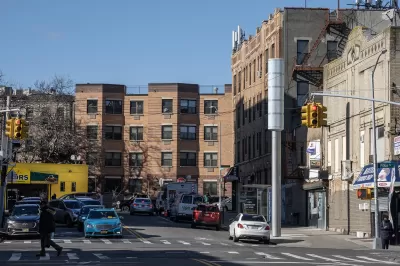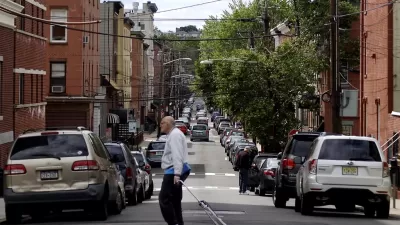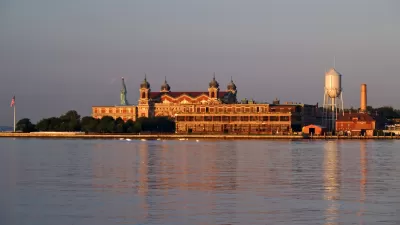More than 2,000 32-foot towers are coming to New York City street corners to improve 5G connectivity throughout the city, and residents aren’t happy, citing incompatible design and visual distraction as a threat to safety.

Over the past two years, 150, 32-foot-tall 5G towers have popped up around New York City, as part of the city’s effort to upgrade its wireless service. The initiative was announced back in 2014 and touted as one of the largest and most ambitious WiFi networks in the world. The large “smart poles” have drawn strong reaction from residents in some neighborhoods, particularly historic districts, where they say the futuristic silver and gray aesthetic, transmitter-covered tops, and even video displays stick out like sore thumbs. “At least 16 community boards across the city — representing approximately two million New Yorkers — have voiced concerns about the 5G tower rollout,” writes Dodai Stewart in a New York Times article. “[T]he state’s Historic Preservation Office recently warned that tall towers would have an adverse effect on landmark blocks in the Greenwich Village Historic District,” saying the “incompatible design” of the poles would “create a visual distraction.”
City representatives say they will not be deterred by NIMBYism, but with another 2,000 towers slated for installation citywide, the pushback will likely grow. “Many of the locations of Link5G towers (as well as LinkNYC Wi-Fi kiosks, which do not have towers) were previously home to public pay phones,” which officials say took up much more space. Nick Colivin, the chief executive of LinkNYC, told the New York Times that the mission of LinkNYC and the 5G program is to provide digital connectivity for free to everyone in the city, which he contends is critical for people to be able to “participate in the economy, apply for jobs, interact with the government, pay a parking ticket,” and more. But he knows what he’s up against, Stewart writes. “It’s always hard, in a city like New York, to change things,” he told her.
FULL STORY: Does New York City Really Need These Giant 5G Towers?

Planetizen Federal Action Tracker
A weekly monitor of how Trump’s orders and actions are impacting planners and planning in America.

Maui's Vacation Rental Debate Turns Ugly
Verbal attacks, misinformation campaigns and fistfights plague a high-stakes debate to convert thousands of vacation rentals into long-term housing.

Restaurant Patios Were a Pandemic Win — Why Were They so Hard to Keep?
Social distancing requirements and changes in travel patterns prompted cities to pilot new uses for street and sidewalk space. Then it got complicated.

In California Battle of Housing vs. Environment, Housing Just Won
A new state law significantly limits the power of CEQA, an environmental review law that served as a powerful tool for blocking new development.

Boulder Eliminates Parking Minimums Citywide
Officials estimate the cost of building a single underground parking space at up to $100,000.

Orange County, Florida Adopts Largest US “Sprawl Repair” Code
The ‘Orange Code’ seeks to rectify decades of sprawl-inducing, car-oriented development.
Urban Design for Planners 1: Software Tools
This six-course series explores essential urban design concepts using open source software and equips planners with the tools they need to participate fully in the urban design process.
Planning for Universal Design
Learn the tools for implementing Universal Design in planning regulations.
Heyer Gruel & Associates PA
JM Goldson LLC
Custer County Colorado
City of Camden Redevelopment Agency
City of Astoria
Transportation Research & Education Center (TREC) at Portland State University
Jefferson Parish Government
Camden Redevelopment Agency
City of Claremont





























